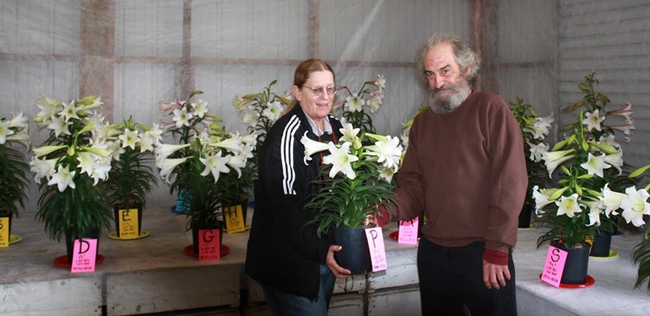- Author: Kathy Keatley Garvey
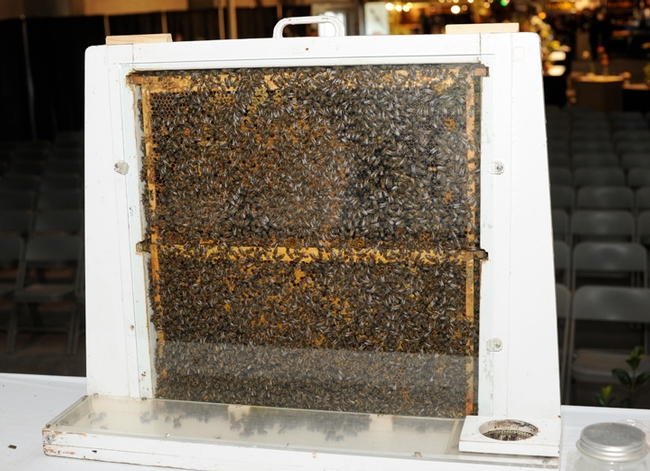
The family friendly science-based event, set from 9 a.m. to 4 p.m., will showcase 12 museums collections, said Biodiversity Museum Day coordinator Tabatha Yang, education and outreach coordinator for the Bohart Museum of Entomology. All 12 collections are within walking distance on campus except for the Häagen-Dazs Honey Bee Haven on Bee Biology Road for the Raptor Center on Old Davis Road.
It is free open to the public, and parking is also free.
The committee lists these attractions, geared toward children ages 6 to 10, but also interesting to all age groups:
You can "pet" walking sticks, Madagascar hissing cockroaches and tarantulas at the live "petting zoo" at the Bohart Museum of Entomology, located in Room 1124 of the Academic Surge Building on Crocker Lane.
You can marvel at the huge dinosaur bones in the Paleontology Collection in the Earth and Physical Sciences Building on Crocker Lane.
You can see carnivorous plants "swallow" flies and other unsuspecting insects in the Botanical Conservatory, off Kleiber Hall Drive.
You can sample Vegemite and kombucha at the Phaff Yeast Culture Collection, situated in the Earth and Physical Sciences Building on Crocker Lane.
You can get up close to hawks and other birds of prey and watch demonstrations at the California Raptor Center on Old Davis Road. You can also check out the Raptor Center museum and even pick apart owl pellets to look for bones.
You can see prehistoric tools and watch demonstrations of flint knapping and atlati throwing at the Anthropology Museum display, Young Hall, central campus.
You can catch bees and other insects in a vacuum device for a catch-and-release activity at the Häagen-Dazs Honey Bee Haven on Bee Biology Road, and get a close-up view of the queen bee, workers and drones in the bee observation hive.
You can engage in leaf rubbing activities, olive wreath crown making and some interactive activities dealing with erosion control and composting at the Arboretum and Public Garden, headquartered on LaRue Road.
You can also look through the portable Scanning Electron Microscope (SEM), borrowed from Hitachi. It will be located in the Academic Surge Building, either in the Bohart Museum or in the Wildlife Room, said Yang.
The UC Davis Biodiversity Museum Day is also a good time for prospective students to learn about possible majors.
The following will be open from 9 a.m. to 1 p.m.:
- Arboretum and Public Garden, headquartered on LaRue Road
- Bohart Museum of Entomology, Academic Surge Building
- California Raptor Center, Old Davis Road
- Museum of Wildlife and Fish Biology, Academic Surge Building
- Paleontology Collection, Earth and Physical Sciences Building
- Phaff Yeast Culture Collection, Earth and Physical Sciences Building
- Viticulture and Enology Culture Collection, Earth and Physical Sciences Building
The following will be open from noon to 4 p.m.:
- Anthropology Museum, Young Hall
- Botanical Conservatory, greenhouses along Kleiber Hall Drive
- Center for Plant Diversity, Sciences Lab Building
- Häagen-Dazs Honey Bee Haven, Bee Biology Road
- Nematode Collection, Sciences Lab Building
All participating museums and collections have active education and outreach programs, Yang said, but the collections are not always accessible to the public, Yang said. In the event of rain, alternative locations are planned for the outdoor sites. Maps, signs and guides will be available at all the collections, online, and on social media, including Facebook and Twitter, @BioDivDay.
For further information about the event, access the UC Davis Biodiversity Museum Day website.
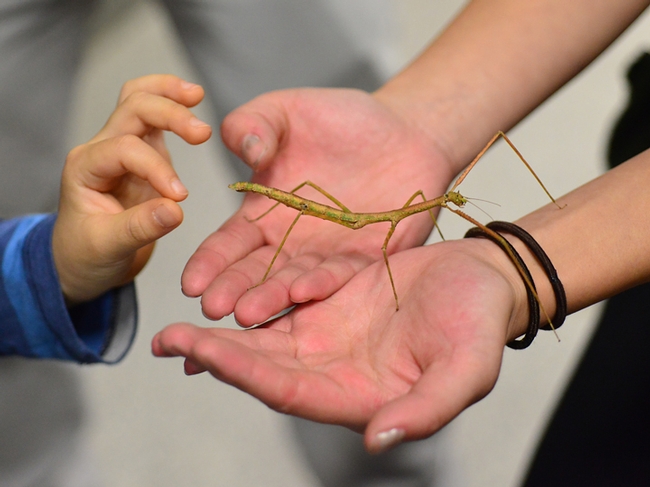
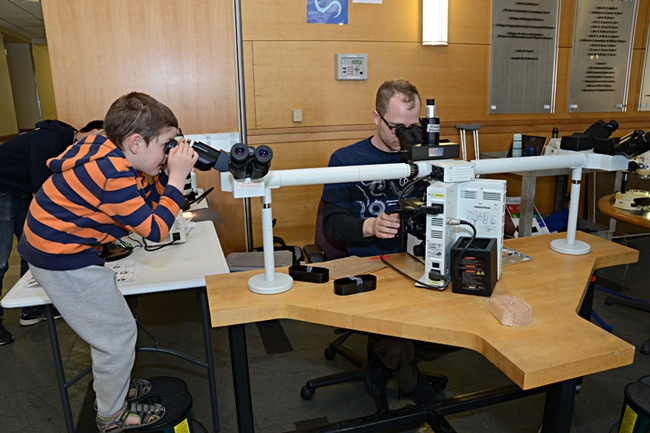
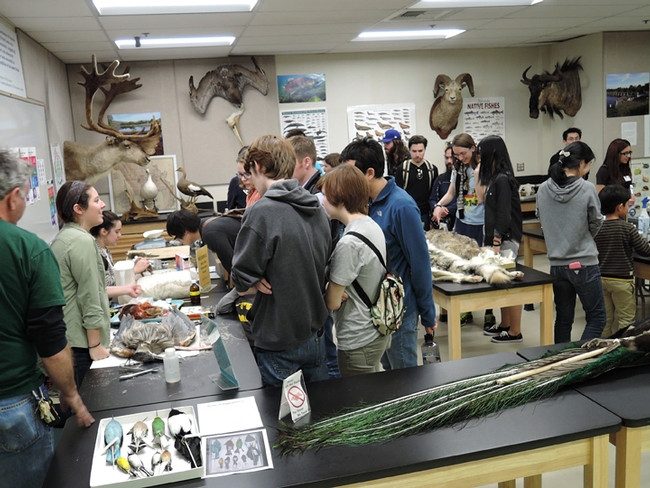
- Author: Kathy Keatley Garvey

The Bohart Museum of Entomology of UC Davis is hosting an open house on “Parasite Palooza: Botflies, Fleas and Mites, Oh, My” from 1 to 4 p.m., Sunday, Jan. 22 in Room 1124 of the Academic Surge Building, Crocker Lane.
Senior public health biologist Mike Niemala of the California Department of Public Health, who received his master of science degree from UC Davis, will participate in the three-hour open house, discussing ticks and other health issues, and handing out fliers and brochures.
Nematologist Lauren Camp, who received her doctorate in December, will head the program on nematodes. She studied with major professor Steve Nadler, professor and chair of the UC Davis Department of Entomology and Nematology.
"Nematodes are a large group (phylum) of roundworms," she said. "Most nematodes are not parasites, but people may be familiar with some of the parasitic species. Some well-known nematode parasites of humans are pinworm, Ascaris, hookworm, and guinea worm. Dogs and cats can also become infected with nematodes including heartworm, hookworm, or Toxocara."

"I first became interested in parasites during my undergrad degree at the University of Chicago," she said. "My specific interest in nematode parasites developed when I read some of Dr. Nadler's work on the evolutionary relationships of nematodes for an invertebrate biology class. Nematodes are an amazing phylum of organisms- they exist in almost every known environment on the planet, and different species eat everything from bacteria and fungi to plant and animal tissue. I find parasites particularly fascinating, because they are dependent on another organism (or organisms) for part or all of their life cycle."
Also scheduled to participate: Adrienne Mora, a National Science Foundation postodoctoral research fellow in the UC Davis lab of Andy Sih, Department of Environmental Science and Policy. Mora studies trematode parasites, that she says, "behaviorally manipulate their fish hosts to perform strange behaviors that make them more likely to be eaten by final host bird predators."
Free and Open to the Public
The Bohart event, free and open to the public, will also spotlight such arthropod parasites as lice, mites, and bed bugs. The family craft activity will focus on origami paper hats; attendees can make and can attach stickers of parasites.
The Bohart Museum, directed by Lynn Kimsey, professor of entomology, is a world-renowned insect museum that houses a global collection of nearly eight million specimens. It also maintains a live “petting zoo,” featuring walking sticks, Madagascar hissing cockroaches and tarantulas. A gift shop, open year around, includes T-shirts, sweatshirts, books, jewelry, posters, insect-collecting equipment and insect-themed candy.
The Bohart Museum's regular hours are from 9 a.m. to noon and 1 to 5 p.m. Mondays through Thursdays. The museum is closed to the public on Fridays, Saturdays and Sundays and on major holidays. Admission is free.
More information on the Bohart Museum is available by contacting (530) 752-0493 or bmuseum@ucdavis.edu. The website is http://bohart.ucdavis.edu/
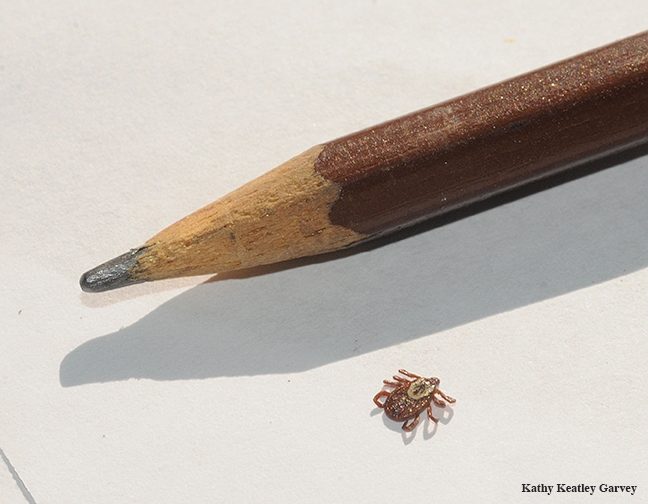
- Author: Kathy Keatley Garvey
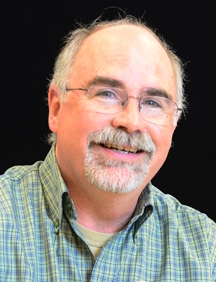
Lewis is recognized as a global leader in using nematodes as biological agents, said nematologist Steve Nadler, professor and chair of the UC Davis Department of Entomology and Nematology.
Lewis will receive the award at PBESA's 100th annual meeting, “Science for the Next Century,” set April 3-6 in Honolulu. PBESA is comprised of 11 western states: Alaska, Arizona, California, Hawaii, Idaho, Montana, Nevada, Oregon, Utah, Washington, Wyoming), parts of Canada and Mexico, and seven U.S. territories.
Lewis is now an applicant for the national IPM award, to be presented by ESA at its September meeting in Orlando, Fla.
IPM specialist Frank Zalom, UC Davis distinguished professor of entomology and a past president of the 7000-member Entomological Society of America, praised “Ed's outstanding contributions to our state, national and global agricultural research.”
“Ed's work involves five of our state's 10 most valued commodities: almonds, a $5.9 billion crop, strawberries, $2.5 billion; walnuts, $1.8 billion; tomatoes, $1.6 billion and pistachios, $1.6 billion (2014 statistics),” said Zalom, a past recipient of the Pacific Branch and national IPM awards. “Also in 2014, California's agricultural exports amounted to $21.59 billion in value. Thus, in many respects, California feeds the world, and Ed's research is integral to controlling insects and nematodes.”
“Dr. Lewis has one of the most diversified research programs that I have known,” Nadler said. “He collaborates regularly with many different constituencies ranging from small startup companies to various commodity boards in order to take information from basic laboratory research and apply it to field situations. What ties together many of these projects is biological control of pest organisms with a focus on sustainability and integrated pest management.”
“Dr. Lewis' lab has been instrumental in using entomopathogenic nematodes (EPNs) to implement biological control of a large variety of insect pests,” Nadler pointed out. “His research with these nematodes has focused on investigating the ecological factors that relate to host-finding, persistence in soil, and their efficacy in field situations.”
In addition to understanding factors that influence nematode success, the Lewis laboratory “has worked to understand how other approaches, such as novel fertilizers, can work in combination to increase plant productivity,” Nadler said.
“Few scientists working with EPNs have designed and implemented such detailed and relevant studies to characterize what happens to nematodes under field conditions,” Nadler noted. “Importantly, use of EPNs to control naval orangeworm is effective and can reduce the need for pesticide applications.”
Research entomologist David Shapiro-Ilan of the USDA's Agricultural Research Service said that Lewis' research has “contributed immensely to the disciplines of entomology and IPM.”
“Dr. Lewis has clearly emerged as a world leader in research and application of entomopathogenic nematodes or EPNs,” said Shapiro-Ilan.
A native of New York, Lewis received his doctorate in entomology in 1991 from Auburn (Ala.) University and then accepted postdoctoral positions at Rutgers University and the University of Maryland. He then moved to Virginia Tech to join the entomology faculty there.
Lewis joined the UC Davis faculty in 2004. He serves as the editor-in-chief of the Elsevier journal Biological Control. He is also known for teaching two highly popular classes at UC Davis: “Behavioral Ecology of Insects” and “Biological Control of Agricultural Pests.”
- Author: Kathy Keatley Garvey
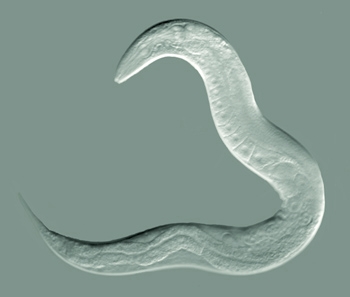
New to the Biodiversity Day are the Nematode Collection, Häagen-Dazs Honey Bee Haven, California Raptor Center, Phaff Yeast Culture Collection and the UC Davis Arboretum and Public Garden.
They will join the Center for Plant Diversity, Botanical Conservatory, Paleontology Collections, Anthropology Collection, Museum of Wildlife and Fish Biology, and the Bohart Museum of Entomology for a day of science exploration.
Biodiversity Museum Day is billed as a special day for the public to go behind the scenes to learn how scientists conduct research; gain first-hand educational experience; and see some of the curators' favorite pieces, including the history of the collection or the organism.
Parking is free. Visitors are encouraged to stroll or bike around the UC Davis campus to visit these diverse collections. They can explore displays, talk to scientists and students, and participate in family-friendly activities. This year students interested in applying or transferring to UC Davis are especially encouraged to visit.
All participating museums and collections have active education and outreach programs, but the collections are not always accessible to the public. For a full-day experience, the Biodiversity Museum Day has scheduled staggered hours:
- Anthropology Collections, Young Hall, open noon to 4 p.m.
- Arboretum, Headquarters along LaRue Road, open 10 a.m. to 4 p.m.
- Bohart Museum of Entomology, Academic Surge Building, open noon to 4 p.m.
- Botanical Conservatory, greenhouses along Klieber Hall Drive, open 10 a.m. to 4 p.m.
- California Raptor Center, Old Davis Road, open 9 a.m. to noon
- Center for Plant Diversity, Sciences Lab Building, open 1 p.m. to 4 p.m.
- Häagen-Dazs Honey Bee Haven, Bee Biology Road, open 1 p.m. to 4 p.m.
- Museum of Wildlife and Fish Biology, Academic Surge Building, open noon to 4 p.m.
- Nematode Collection, Sciences Lab Building, open 1 to 4 p.m.
- Paleontology Collections, Earth and Physical Sciences Building, open 11 a.m. to 3 p.m.
- Phaff Yeast Culture Collection, Earth and Physical Sciences Building, open 11 a.m. to 3 p.m.
Most of the collections are located indoors. In the event of rain, alternative locations are planned for the outdoor sites. Maps, signs and guides will be available at all the collections, online, and on social media, including Facebook and Twitter, @BioDivDay.
For further information about the event, contact Ernesto Sandoval, director of the Botanical Conservatory, at jesandoval@ucdavis.edu or (530) 752-0569.
(Editor's Note: More information and photos are pending. The Bohart Museum of Entomology,Häagen-Dazs Honey Bee Haven and the Nematode Collection are all part of the UC Davis Department of Entomology and Nematology.)
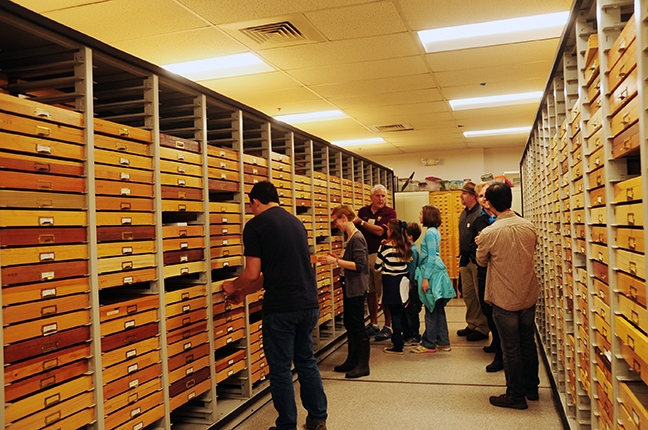


- Author: Kathy Keatley Garvey
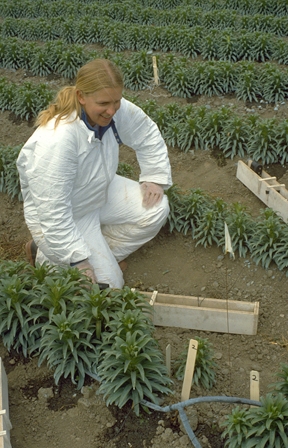
Nematodes, also known as “round worms,” can kill Easter lilies. And they do.
“Easter lilies have no natural resistance to nematodes and all attempts to breed in resistance have failed,” said Lee Riddle, director of the Easter Lily Research Foundation in Brookings, southern Oregon. “Without both soil treatment and in furrow root treatment at planting, Easter lilies will die from nematode infestation, I mean dead foliage, dead stem, dead roots, dead bulb, end of story, dead plant.”
Westerdahl's research involves the interactive management of plant parasitic nematodes that feed within the plant's roots. Sometimes the “glop” she uses on the agricultural crop resembles the contents of a kitchen sink drain or something composting in an unkempt refrigerator, say her grateful colleagues.
Westerdahl, a Cooperative Extension nematologist and professor based in the UC Davis Department of Entomology and Nematology, works closely with UC Cooperative Extension Farm Advisors, growers and the industry to protect agricultural crops, including Easter lilies.
“Our unique little microclimate on the north coast of California, and south coast of Oregon is the only place in North America where Easter lilies can be grown,” Riddle said. “It gets too hot or too cold everywhere else. There is only a thin strip of land between the ocean and the coast range of mountains of perhaps 2,000 acres where this crop can be grown.”
The two-county area straddling Brookings, located in southwest Curry County, Oregon, and the Smith River area of northwest Del Norte County, California, is known as the “Easter Lily Capital of the World.” Misted by the Pacific Ocean, the coastal strip is where growers cultivate 95 percent of the world's Easter lily bulbs. That amounts to some 11 million bulbs annually.
“Every field on this bench of land has been used repeatedly since the 1940s to produce this crop,” Riddle said, “so every square inch of this land has been infested with nematodes from at least the early 1950s. Easter lilies are in the soil up to 13 months between planting and digging, so control measures must last at least a year or the lilies will die.”
Westerdahl has worked closely with the Easter lily industry for some two decades. “Each year Becky puts out 120 plots of bulbs,” Riddle said. “Our crop is pretty unique in that it takes three full years to grow a mature-sized marketable bulb. We field-plant and harvest bulbs in the fall of each year, a process that takes August, September, and October to complete. We redig every bulb every year to move them to a newly treated field because the nematode pressure is so high. We also treat as we replant due to the nematode pressure.”
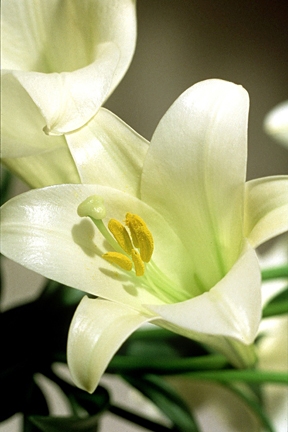
Riddle said that “some of Becky's earlier work looked at alternative cover crops that might reduce nematode populations in the soil. We routinely ‘rest' each field for three years between lily crops with a grass-plus-clover cover crop. This regenerates the high organic matter that lily crops require but it also grows nematodes. At one point, Becky kept some soil plots absolutely bare of vegetation for four years hoping to starve them out, but they were still there after four years.”
Westerdahl travels to the research foundation station at least four times a year: in early September to harvest the previous year's trial; in mid-October to plant the next year's trial; around Easter to present trial results to the growers; and in late June for the foundation's annual field tour where she showcases the test plots.
October's heavy rains can prove problematic. “We watch the forecasts but often we end up in the shed watching 3-inch rains drenching our planting area,” Riddle said. “Over the years Becky has tried everything but the kitchen sink, although that is not exactly true because some of the things probably came out of the kitchen sink. I remember her coming up one year with bags full of petri dishes full of some glop which she spooned into a blender. Then she mashed that through a kitchen strainer and glopped that on top of the planted bulbs.”
“We have had ozone generators pumping ozone under the lilies, various combinations of plant-oils-that-smell-good-enough-to-eat as bulb soaks, we've cooked bulbs in hot water, smothered them in crab shells, watered them with electronically altered water, and dosed them with an alphabet soup of numbered compounds.”
Recently Westerdahl “tested quite a number of beneficial organisms,” which Riddle described as resembling “something you might find in the hidden corners of an unkempt refrigerator.”
“I guess you could honestly say that Becky has thrown the kitchen sink at Easter lily bulb nematodes,” Riddle said, “and we hope she continues to give our nematodes some grief.”
Prior to 1941, Japan produced and marketed most of the world's Easter lilies (Lilium longifloru), which are native to Japan's southern islands. When World War II eliminated America's dependence on Japanese-produced bulbs, commercial bulb production shifted to the United States, in the small stretch of southern Oregon/northern California area where the mild climate, ocean mist, protective bay, rich soil and abundant rainfall proved perfect for growing superior bulb crops. Japan has never regained the market.
Nematodes, however, keep the growers, industry and Westerdahl scrambling.
Westerdahl says the lesion nematode (Pratylenchus penetrans) can “devastate the Oriental and Easter lilies.” The multiple-year growing cycle for these crops requires a high degree of control for both the planting stock and the soil, she noted.
In collaboration with Humboldt County Farm Advisor Deborah Giraud, “our research has resulted in a greater understanding of the biology of the nematode, plus innovations in crop rotation, pre-plant treatments of bulbs, and biological methods for pre and post-plant treatment of soil,” Westerdahl said. The California Department of Food and Agriculture awarded them with a Specialty Crop Block Grant for Sustainable Easter Lily Production.
"Becky has always been willing to do research in my far away location," Giraud said. "She truly believes in supporting Advisors in the counties and helping solve grower's problems in their fields with the campus lab work to verify results. I have thoroughly enjoyed working with her and appreciate her dedication to Extension.
A native of Riverside, Westerdahl joined the UC Davis Department of Nematology (now Entomology and Nematology) in 1986. Her position as a statewide nematologist encompasses 85 percent Cooperative Extension (UC ANR) and 15 percent I & R.
How did she become interested in nematology? “I have to blame it on the Boy Scouts,” Westerdahl said. My father (former Riverside Mayor Ab Brown) was a troop leader and he knew two faculty members at UC Riverside, also involved in Boy Scouts. I had just graduated (1972) from Chapman College in southern California and was looking for a summer job. My father got me a job with Seymour D. Van Gundy counting nematodes. After counting nematodes under a microscope all day, I continued to see and count them in my dreams at night. After I did that, I knew I never wanted to do it again.”
She went on to receive her doctorate in biology and nematology from UC Riverside in 1978.
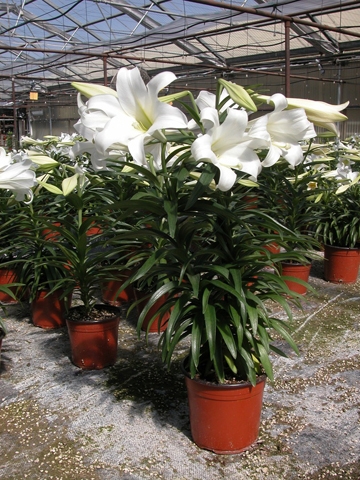
Westerdahl's position involves teaching, research and public service. She's taught an online course for 12 years; teaches a graduate course every other spring, and teaches general biology every spring. Her research deals with new developments in nematode biology and management. But mostly she's out in the field. “I'm pretty much a field person,” she said.
“I like to work with newer advisors to help them get started,” she said. When she receives calls from growers asking how to control nematodes, she first wants to make sure that they're nematodes. “If they say they see them crawling around in the soil, I know they're not nematodes because they're microscopic.”
“There are no statewide solutions. There are individual growers working with individual solutions. I find out what their needs are; what their problems are.”
Westerdahl, highly honored by the Society of Nematologists with its CIBA Recognition Award for Excellence, also works on other commodities, including tomatoes and turf grass. In addition, she provides expertise on plant parasites of sugar beets, carrots, cantaloupes, broccoli, peppers and strawberries.
Westerdahl came to UC Davis as a postdoctoral scholar of apiculturist/bee scientist Norm Gary and medical entomologist Robert Washino. Her interest in bees and beekeeping led to her being elected the first secretary-treasurer of the 500-member Western Apicultural Society, formed at UC Davis.
“When I had an opportunity to recruit her as a postdoc in my lab, I jumped at the chance at a time my lab was expanding our efforts on biological control agents on mosquitoes that showed promise,” said Washino, now an emeritus professor, former chair of the department, and a former special assistant to the dean of the College of Agricultural and Environmental Sciences.
“At that time, I knew she was a cum laude graduate of Chapman College in southern California and was working with Ed Platzer's nematology lab on the parasitic nematode, Romanomermis culicivorax, a worthy candidate against mosquitoes breeding in permanent-semi permanent aquatic habitats.”
Soon Westerdahl was elected president of the worldwide 600-member Society for Vector Ecology (SOVE) that “was rapidly becoming a popular national organization for medical entomologists,” Washino said. “ Becky finally agreed to join our lab primarily as a laboratory worker, but quickly adjusted her experimental activities to conduct both field and laboratory studies. She was the senior author of several papers from my lab. My deep respect for her professional as well as personal conduct continues to this day.”
Westerdahl developed and maintains a website on Nematode Knowledge Expectations for Pest Control Advisors (PCAs).
Her research spans chemical and cultural practices, as well as multidisciplinary approaches involving weeds, fungi, nematodes, fumigant dispersal and fumigants. She also manages nematodes with insecticides and fungicides and has helped to register new nematicide active ingredients.
In addition to short-term projects, Westerdahl engages in longer term high high-risk projects involving nematode biology and diagnosis. “This approach has historically received little attention because of its high risk for failure, and system pressures to rapidly generate publications,” she said. “Inclement weather preventing sampling or applications, early termination of perennial crops by growers, and destruction of buried data loggers by cultivation equipment are examples of setbacks we have experienced in this research.”
Today the young college graduate who vowed never to count nematodes again after working at a summer job, does that and more. “Becky has been involved in all of my research on methyl bromide alternatives,” said Cooperative Extension specialist Husein Ajwa, based in Salinas. “Becky has been my go-to nematologist since day one, evaluating nematodes in my research plots, answering questions or reviewing my proposals and papers. Without her help, my work would have lacked the crucial knowledge on the efficacy of soil fumigants. In short, Becky's desire to study nematodes has overshadowed even my desire to fumigate them.”
Westerdahl, known in the department for her savvy technology in our increasingly advanced digital world—she's never met a computer, scanner, printer or cell phone she can't master and she jokes that “I'm Amazon's biggest customer”--has seen rapid changes in other areas as well. “I used to tally 30,000 miles on my car every year for Extension work, but now I do more flying than driving.” In addition, the love of traveling extends to her personal life. She and her retired husband, Dane, enjoy traveling to foreign countries--but she probably has nematodes on her mind, at least part of the time.
“It's an honor to be a nematologist,” Westerdahl said, “and to work and solve problems.”
Related Links:
Easter Lily History: Easter Lily Research Foundation
The Life of an Easter Lily: Easter Lily Research Foundation
Gallery of Easter Lily Photos: Easter Lily Research Foundation


